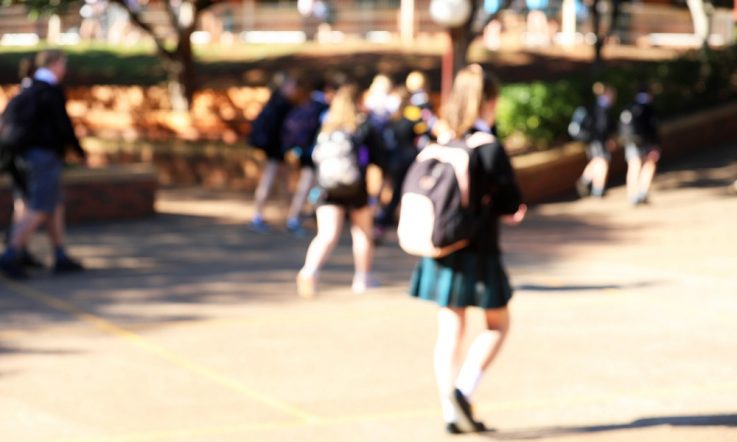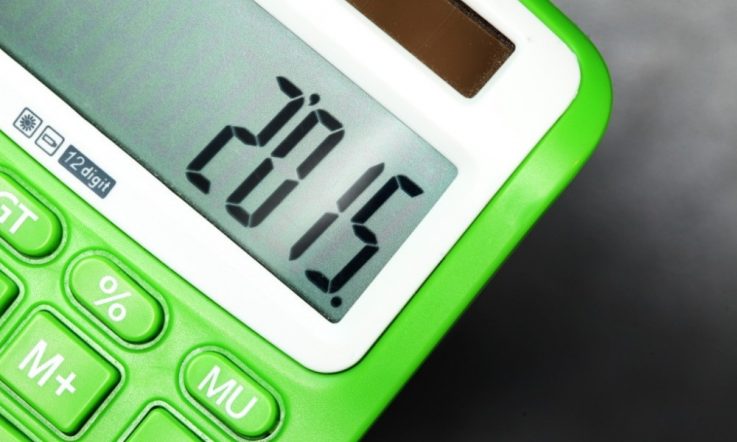What is epilepsy? How does the condition impact on a student's learning? And what do school leaders, teachers and anyone with a duty of care in K-12 settings need to know? In this Q&A, Teacher speaks to Wendy Groot, President of Epilepsy Australia, to find out more.
An 11-year-old boy, sitting in English class, is gazing out the window, a blank expression on his face. The teacher notices the boy's mind is clearly not on the task at hand and attempts to draw him back into the discussion, however, he continues to ‘daydream'. The whole episode lasts for less than 20 seconds.
While in class, a six-year-old girl is making strange movements with her tongue that could be construed as rude tongue-poking. She is fiddling with her T-shirt in a repetitive, rhythmic way and fidgeting restlessly. She didn't seem to be aware of what was going on around her.
A 15-year-old student seems particularly clumsy and falls over more than other students, sometimes leading to injury.
Groot says, while these are examples of what might be considered normal day-to-day behaviour in children, they are in fact typical behaviours associated with three of the less familiar forms of epileptic seizure – absence, focal with impaired awareness, and atonic seizures, respectively.
‘Most think of epilepsy as the more obvious tonic-clonic type of seizure where the person loses consciousness, their body stiffens and, if standing, they fall to the ground (tonic phase) followed by their limbs jerking in strong, symmetrical, rhythmic movements (clonic phase). However, seizures can present in more than 40 different ways and every person's experience with the condition is unique.'
Epilepsy Australia is the national coalition of state-based organisations providing services to people with epilepsy, their families and carers, across the country. Its Epilepsy Smart Schools program supports school leaders, teaching and non-teaching staff, and anyone with a duty of care, to align with current Australian, state and territory government policy requirements and ensure they provide a safe and inclusive learning environment for all students with epilepsy.
Here are some of the common questions Epilepsy Australia receives from educators, parents, students and members of the community.
What is epilepsy?
Epilepsy is a serious neurological condition that involves recurring seizures. Everyone's brain sends electrical messages to their body, which tell the body what to do. Seizures happen because of a disruption to electrical activity in the brain, leading to a change in a person's movement, behaviour, level of awareness and/or feelings. Epilepsy can also carry stigma, high economic costs and psychiatric comorbidities.
As every person's experience with epilepsy is different, and as there are many different seizure types, it can be difficult to identify whether a student is, in fact, experiencing a seizure. A person may also have more than one seizure type. Their behaviour during and after a seizure depends on the type of seizure and the area of the brain being affected.
While approximately 70 per cent of people living with epilepsy will gain control of their seizures by taking anti-epileptic drugs (AEDs), the remaining 30 per cent have what is considered to be ‘uncontrolled' or ‘drug-resistant' epilepsy. In these cases, alternative treatment options, such as following a strictly monitored ketogenic diet, neurosurgery or vagal nerve stimulation, may be offered to reduce or eliminate seizure activity. Some childhood epilepsy syndromes are ‘outgrown' while others, such as Dravet Syndrome, are severe and may have lasting effects on a child's cognitive development, or even result in premature death.
As epilepsy is unique to each individual who has the condition, so too are the impacts of epilepsy and seizures on each person. For those with good seizure control, it may not have a big impact on their life. Others may experience physical, psychological and social impacts, and it can greatly affect their education, employment and independence. For these people, obtaining the best possible education in their early years is critical to their ongoing education and training prospects, and avoiding the likelihood of long-term unemployment and poverty.
What is the prevalence of epilepsy in Australia?
It is estimated that one million people living in Australia will have a seizure in their lifetime. Specifically, approximately 1 in 200 Australian children live with epilepsy. It is very likely that every teacher will, at some stage in their career, teach a child who has epilepsy. The statistic for children with epilepsy in special education schools is far greater, with an estimated 1 in 4 students having the condition. This is due to the prevalence of co-morbidities such as autism, Down syndrome or cerebral palsy.
What causes epilepsy?
Epilepsy is not contagious – you cannot ‘catch it'. There are many causes of epilepsy and, for many people (40 per cent), the cause cannot be found. For others, some of the causes include: brain abnormalities that occur in utero (before birth); low oxygen during birth; brain injury, such as after a traumatic head injury; brain infection such as meningitis or encephalitis; stroke; brain tumour; neurodegenerative diseases, such as Alzheimer's disease; or other conditions that increase the likelihood of developing epilepsy, such as cerebral palsy or Down syndrome. Genetic causes, whether inherited from family or new gene mutations, can also affect the brain either structurally or metabolically (chemically).
What does a seizure look like?
Seizures can originate in one specific part of the brain, or they can rapidly spread to affect the whole brain. Different parts of the brain are responsible for different functions, so where a seizure commences or spreads will determine how it affects parts of the body. This is one reason why seizures can look so different from student to student.
The terms ‘motor' and ‘non-motor' are also used when describing seizure types. Motor relates to physical movement or motion, and seizures involving motor activity may include either an increase or decrease in muscle tone, leading to muscle twitches, jerks or contractions. Non-motor onset seizures don't involve muscle action but may include behavioural, emotional and/or sensory activity or actions.
It is these differences in seizure activity that may cause difficulties to arise for teachers to identify whether a student is having a seizure. These difficulties in identification and intervention in the school setting may, in turn, lead to an inappropriate response or even lack of medical care when it is needed and, if ongoing seizures are a part of the child's life, missed opportunities to treat seizures and improve the child's learning potential.
The problem is compounded by the fact that children who have other cognitive issues, for example, cerebral palsy or autism, may have seizure behaviours that could be mistaken for their involuntary physical movements or jerks.
This means teachers, and anyone with a duty of care (and particularly those in special education schools), should have specific training in understanding and managing epilepsy. Those at the front line, in the classrooms and in the playground, need to be able to recognise when a seizure is occurring so they can enact the appropriate emergency steps as detailed in that student's own Epilepsy Management Plan. They will also recognise when to seek additional help from someone who is trained in administering emergency medication, if required for that specific student. First aid training is simply not enough.
What are the triggers for seizures?
Not everyone knows what triggers their seizures and this will be the same for your students. However, common triggers include being overtired, not getting enough sleep or not sleeping well, as well as stress, which could be associated with assessment tasks or exams.
Other triggers can include missed medication, infection or illness, hormonal changes, dehydration, low blood sugar, use of certain medications, bright, flashing or flickering lights, and even alcohol and illicit drug use.
How does epilepsy affect a student at school?
Epilepsy can have a profound effect on a student's wellbeing at school and their educational outcomes. It affects their ability to focus, take in information and recall facts. Seizures can be extremely disruptive to a student's daily life, causing tiredness with an overwhelming need to sleep, lack of ability to concentrate and impaired cognitive function. If the seizures are primarily nocturnal (i.e. during sleeping hours) and are therefore not necessarily occurring during the student's daytime hours, they will no doubt still be causing the student to be abnormally tired during the day, affecting concentration and learning.
Adding to the physical effects on the child are the psychological impacts arising from the stigma associated with epilepsy that still exists today. A child may be told they can't go on a school camp because of their epilepsy, or that they can't participate in swimming events. There are often unnecessary restrictions placed on a child, most likely in a bid to reduce risk or liability to the school, or fear.
How can teachers adjust their practice to meet the needs of students with epilepsy?
Adjustments to the needs of a student with epilepsy could include:
- repeating information in class or providing it in a different format;
- providing more breaks;
- providing catch-up homework that can be completed by the child when they are able; or,
- increased supervisory allowances on camps, sporting events or out in the playground.
With proper teacher education and training, and a few simple concessions, the student is usually able to participate fully in all that school life has to offer, creating a much happier and inclusive experience for the child.
What are the government requirements and obligations in relation to schools?
Under the Australian Government's Disability Standards for Education 2005, schools have a duty of care to ensure that students with disability can access and participate in education on the same basis as other students.
In addition, the state and territory government Education Departments responsible for public schooling have varying policies, procedures and guidelines available on the management of the health and wellbeing needs of students that cover epilepsy. Download an overview (PDF 316KB)
Policies vary from state to state, however, the overriding requirement is for schools to hold an Epilepsy Management Plan for all students with epilepsy as well as an Emergency Medication Management Plan (if required), and to undergo the necessary training in understanding and managing epilepsy and in the administration of emergency medication.
While these policies apply to state government schools, they provide the current best practice guidelines for all schools in Australia, whatever the sector.
What is an Epilepsy Management Plan?
All students with epilepsy should have an Epilepsy Management Plan in place that is held by the school. The plan describes the student's seizure type/s, seizure triggers, how they would like to be supported during seizures and any emergency procedures that should be followed in the event of a seizure.
In some circumstances, a child may also have an Emergency Medication Management Plan, which details the medication, method of administration, dose, instructions and emergency procedures to enact in the event of a seizure.
Both types of plans are developed by the child's Neurologist, Paediatrician or General Practitioner. The parent or carer, and sometimes education staff, may also have input into developing the Epilepsy Management Plan.
Both plans should be reviewed and updated annually or, in the event of changes, as required.
What is the Epilepsy Smart Schools program?
Becoming an Epilepsy Smart School involves three steps:
- Ensuring the school holds current Epilepsy Management Plans for each student with epilepsy and, if necessary, Emergency Medication Management Plans. This means identification of students that have epilepsy and openly discussing the parent's or carer's wishes regarding care of the child while at school in the event of a seizure.
- Training – all teachers, members of staff, school nurses or anyone with a duty of care, must undertake epilepsy-specific training, including Understanding and Managing Epilepsy and where applicable, Emergency Medication Training. We strive to reinforce to all parties that first aid training is insufficient and does not cover issues such as recognising different seizure types, impacts of epilepsy or the administration of medication for each specific student.
- The school helps to raise awareness of epilepsy to reduce stigma within their school community. This could involve holding a Purple Day awareness-raising event or fundraiser, or a curriculum-based activity in the classroom.
We understand that there are both financial and time costs associated with teachers undertaking training, however, the benefits that planning, training and awareness can add to a student's school life are far-reaching and extend well beyond the school years. Once the three steps are completed, schools become recognised as Epilepsy Smart and receive resources to help them promote their inclusive approach.
Wendy Groot says: ‘With proper teacher education and training, and a few simple concessions, the student is usually able to participate fully in all that school life has to offer, creating a much happier and inclusive experience for the child.’
As a teacher, what adjustments can you make to your own practice to better meet the learning and wellbeing needs of students with epilepsy? As a school leader, how are you ensuring students with epilepsy are able to fully participate in school life?
Epilepsy Australia is the national coalition of state-based organisations. For information on your local state-based organisation, visit www.epilepsyaustralia.net. To find out more about the Epilepsy Smart Schools program visit www.epilepsysmartschools.org.au



